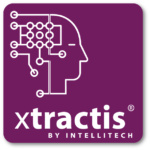XTRACTIS FOR PREcision MEDECINE
Voice-based Detection of Parkinson Disease
Benchmark vs. Logistic Regression, Random Forest, Boosted Tree & Neural Network
Design an AI-based decision system that accurately and instantly diagnoses Parkinson disease from simple voice recordings to obtain a rational diagnosis of the patient’s condition.
Identify the parameters involved in the Parkinson disease and enhance medical knowledge by helping neurologists understand the causal relationships between these parameters, their combination, and the disease.
Help the medical profession to make earlier and more personalized decisions through rapid, systematic, and explainable diagnoses.
Use a model with simple recordings to limit medical protocols that can be costly.
- The top-model is a decision system composed of 26 gradual rules without chaining, aggregated into 2 disjunctive rules.
- Each rule uses from 1 to 24 predictors among the 92 variables that XTRACTIS automatically identified as significant (out of the 753 potential predictors characterizing the fetal cardiotocograms and uterine contraction signals).
- Only a few rules are triggered at a time to compute the decision.
It has a pretty good Real Performance (on unknown data).
It computes real-time predictions up to 70,000 decisions/second, offline or online (API).

LoR=Logistic Regression
RFo=Random Forest
BT=Boosted Tree
NN=Neural Network
Detailed results and explanations in full document
Use Case 2024/03 (v2.0)
Powered by XTRACTIS® REVEAL v13.0.45667 (2023/05)
CONTENTS
- Problem Definition
- XTRACTIS-induced Decision System
- XTRACTIS Process
- Top-Model Induction
- Explained Predictions for 3 unkown cases
- Top-Models Benchmark
- Appendices




